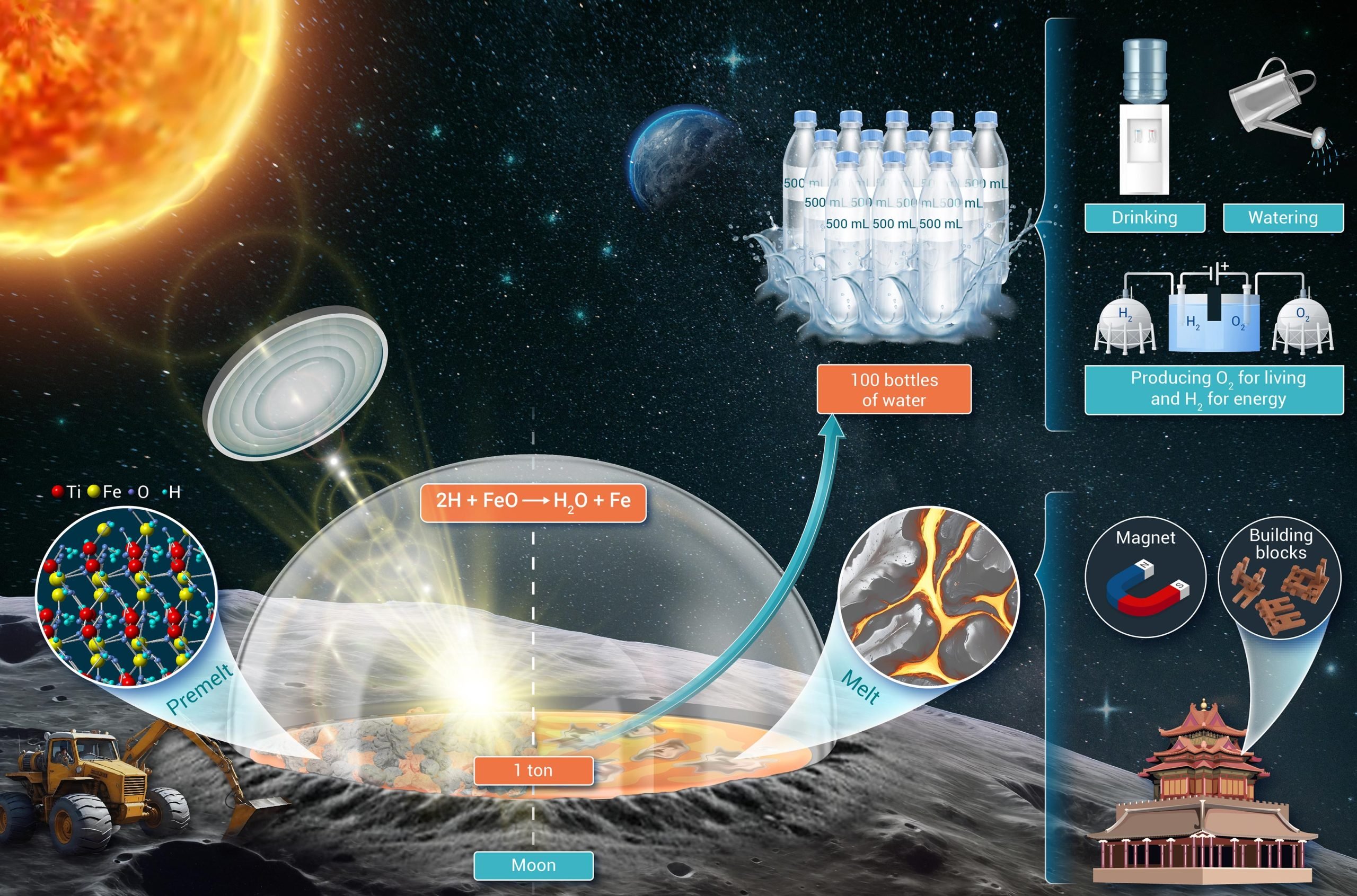Revolutionizing Lunar Exploration: Harvesting Water from Moon's Regolith
Key Ideas
- Researchers at NIMTE in China have devised a method to extract water from lunar regolith using endogenous hydrogen, potentially yielding 50 kg of water per ton of soil.
- The innovative process, involving heating regolith with concave mirrors, signifies a breakthrough in lunar water extraction, crucial for sustaining human life and research on the Moon.
- The study highlights the abundance of solar wind-implanted hydrogen in lunar ilmenite, offering insights into water exploration, potential energy generation, and oxygen production for future lunar missions.
- These findings, published in The Innovation, pave the way for the development of sustainable lunar research stations and provide pioneering insights into utilizing lunar resources for human habitation.
Researchers at the Ningbo Institute of Materials Technology and Engineering (NIMTE) in China have developed an innovative method to produce significant amounts of water on the Moon by reacting lunar regolith with endogenous hydrogen, potentially yielding over 50 kg of water from a ton of lunar soil. This breakthrough could pave the way for sustainable human life and research stations on the Moon. The study, led by Prof. Junqiang Wang, utilized lunar regolith samples from the Chang’E-5 mission and found that heating the regolith above 1,200 K with concave mirrors could generate substantial amounts of water. The research also highlighted lunar ilmenite as a key mineral containing solar wind-implanted hydrogen, which could be utilized for water production, energy generation, and oxygen extraction. These pioneering insights provide a foundation for future lunar exploration and the construction of research stations. The study, titled 'Massive Water Production from Lunar Ilmenite through Reaction with Endogenous Hydrogen,' was published in the scientific journal The Innovation, showcasing the potential for utilizing lunar resources to support sustained human habitation on the Moon.
